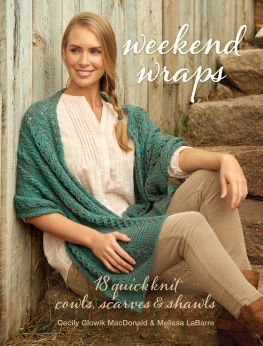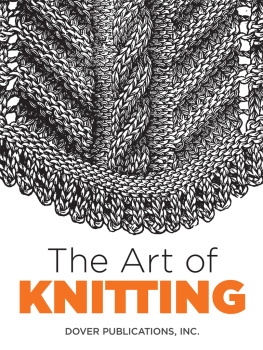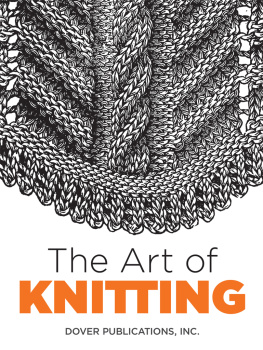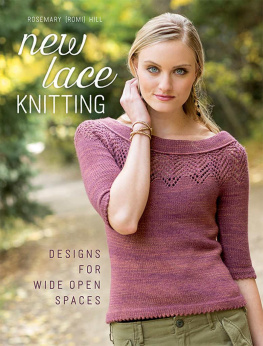
Knitting by Nature
19 Patterns for Scarves, Wraps, and More
SHERYL THIES

Knitting by Nature: 19 Patterns for Scarves, Wraps, and More
2012 by Sheryl Thies

Martingale
19021 120th Ave. NE, Ste. 102
Bothell, WA 98011-9511 USA
ShopMartingale.com
eBook Edition: 2013
No part of this product may be reproduced in any form, unless otherwise stated, in which case reproduction is limited to the use of the purchaser. The written instructions, photographs, designs, projects, and patterns are intended for the personal, noncommercial use of the retail purchaser and are under federal copyright laws; they are not to be reproduced by any electronic, mechanical, or other means, including informational storage or retrieval systems, for commercial use. Permission is granted to photocopy patterns for the personal use of the retail purchaser. Attention teachers: Martingale encourages you to use this book for teaching, subject to the restrictions stated above.
The information in this book is presented in good faith, but no warranty is given nor results guaranteed. Since Martingale has no control over choice of materials or procedures, the company assumes no responsibility for the use of this information.
Library of Congress Cataloging-in-Publication Data is available upon request.
eISBN: 978-1-60468-156-7
Original Source ISBN: 978-1-60468-155-0
 Dedication: for Kevin
Dedication: for Kevin

Contents
Planting and Sprouting the Seed
If youre like me, you eagerly wait for that first spring day thats warm enough to open a window. I always roll up my sleeves, slip on a pair of sandals, and head outside to enjoy it. And after a few warm days, the landscape begins to show signs of lifegreen shoots poke through the dirt and trees start budding. But, faced with the reality of a Wisconsin winter, the wait can be agonizingly long.
Every year, I enjoy a brief reprieve from winters grip; it arrives early in January, just like clockwork. My respite arrives in my mailbox in the form of a catalog, thanks to the Gurneys Seed and Nursery Company. The oversized spring catalog is a sure sign that winter will eventually end. And until it does, I can drink in the magic of spring with photos of blooms in kaleidoscopic colors, delicate new sprouts and shoots, and fast-growing vines. I relish the fantasies of sweet-tasting fruits, blue-ribbon vegetables, and overgrown woodlands. With page after page of eye-catching foliage, grand trees, flowers for butterflies, vegetables, lush grasses, and wonderful cooking herbs, the winter doldrums dont have a chance.
Before you conjure up the wrong impression of me, I need to confess: Im rather ineptwell, downright incompetentwhen it comes to tending plants and gardening. My backyard, canopied by oak trees that define the phrase deep shade, isnt conducive to growing much more than moss. The healthy and thriving plants in- and outside the house are due to the efforts of my husband, Kevin. Kevin gets all the credit for keeping the trees, herbs, and other plants alive and lush.
That said, my appreciation for plants compensates for my incompetence. My dreams are just as dramatic and my passion as strong as any Master Gardener. I search for the first buds and blooms in spring, and I savor the taste of fresh local vegetables that come in my weekly Community Supported Agriculture (CSA) box. In fall, I love hearing the acorns drop from the tall oaks, hit the roof, and then roll down. I buy ornamental corn at the farmers market and rake and rake and rake all the colorful leaves that drop in our yard. In winter I appreciate the color that the Blue Spruce provides against the snowy countryside.
One bitterly cold January night, as I was paging through the Gurneys catalog, I felt inspiredthe seeds of an idea were planted. After working up several yarn swatchesRed Beets, Brussels Sprout, and Clematisthe seeds definitely sprouted, and I knew I had the concept for this book. I would knit my own version of a perennial garden. Once knit, I could enjoy it year after year.
As I expanded the collection of plants and worked my garden by knitting scarves, shawls, and shrugs, the winter melted away. And before I knew it the windows were open, my sleeves were rolled up, and I was wearing sandals. Nature once again showed its resilience.

Groundwork
Texture, stitch patterns, and color dominate this collection of scarves, shawls, and shrugs. Mixed with a little subtle shaping, clever accents, and a bit of drape, you have invigorating projects to knit and stylish accessories to wear.
Some of the stitches and techniques used may be new to you, but that doesnt make them hard to master. Many of the patterns have repetitive stitches and are easy to work and memorize. With a little practice you can easily master a new technique and produce beautiful accessories that youll enjoy year after year.
Start by visiting your local yarn store to select that perfect yarn. If you want your completed project to look like the one in the book, choose the specific yarn or one with similar gauge, fiber, and structure. If you choose a yarn thats markedly different, understand that the end product will also be markedly differentalthough the result may still be a very attractive and striking garment. The choice is yours.
Reading yarn labels can reduce the unknown of selecting and substituting yarn. The label will state the needle size and gauge, yardage, fiber content, and care instructions. When substituting yarn, you want to pick a yarn that is a similar thickness. To make this selection easier, there are universal symbols indicating yarn weights (thickness). The weight of the yarn used for each project in this book is indicated with a corresponding symbol. Comparing the yarn-weight symbol to the standard yarn-weight chart will identify the type of yarn you should be looking for (see Yarn-Weight Guidelines on ).
Be sure to purchase a sufficient amount of yarn. The directions, under the heading of Materials, give the number of skeins for each project and the yardage for each skein. Multiply the number of balls times the amount of yarn on each ball to determine the total number of yards required for the specific wrap. Once you find a yarn that youd like to use, read the label to determine the yardage for that skein. Divide the total number of yards required by the amount in each ball of the substituted yarn to determine the number of balls you should purchase.
Sometimes youll have some yarn left overthis is a lot better than running short! If you have ever run short and were unable to purchase enough to complete the project, you understand the importance of buying enough yarn. Also if you want to alter the project to make it larger or longer, remember to purchase more yarn.
Next page









 Dedication: for Kevin
Dedication: for Kevin

